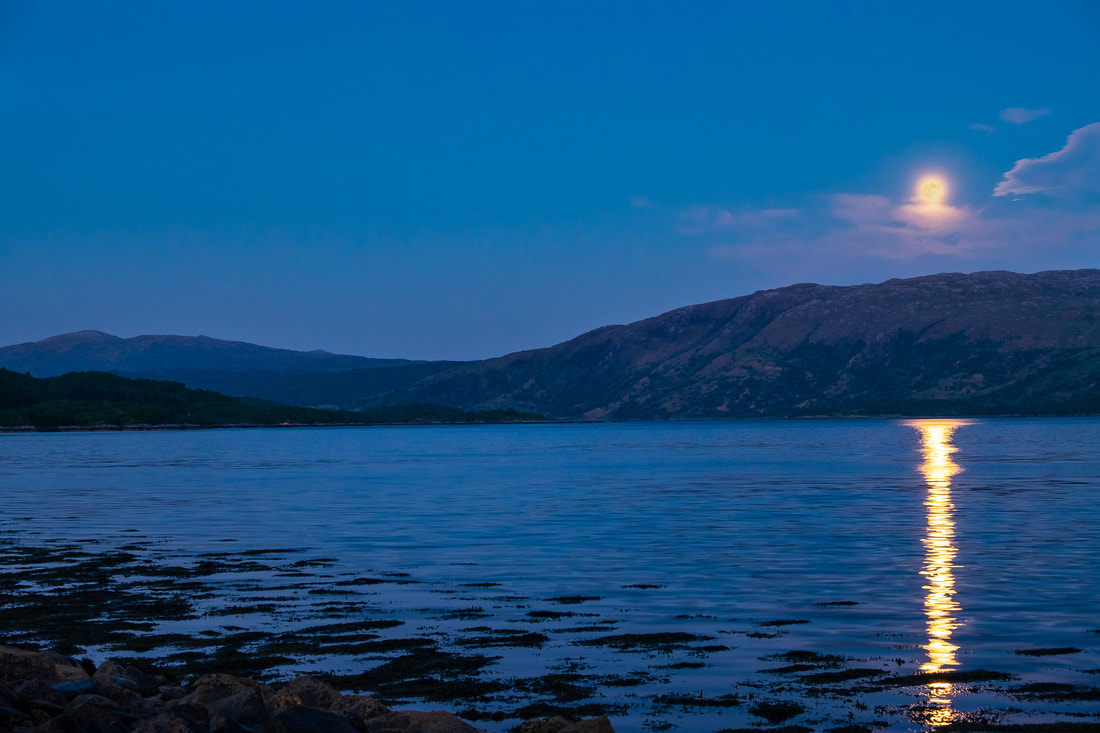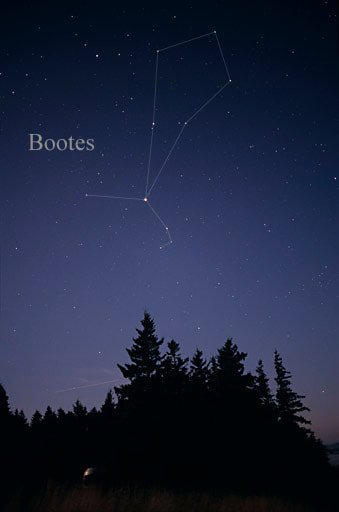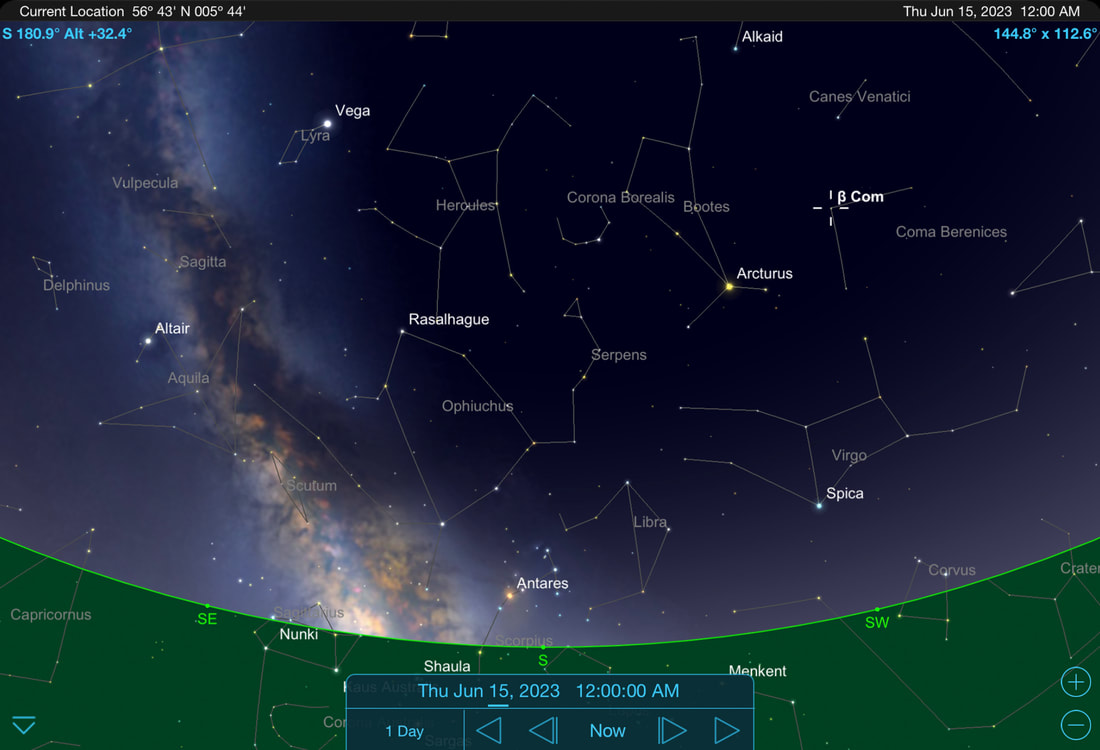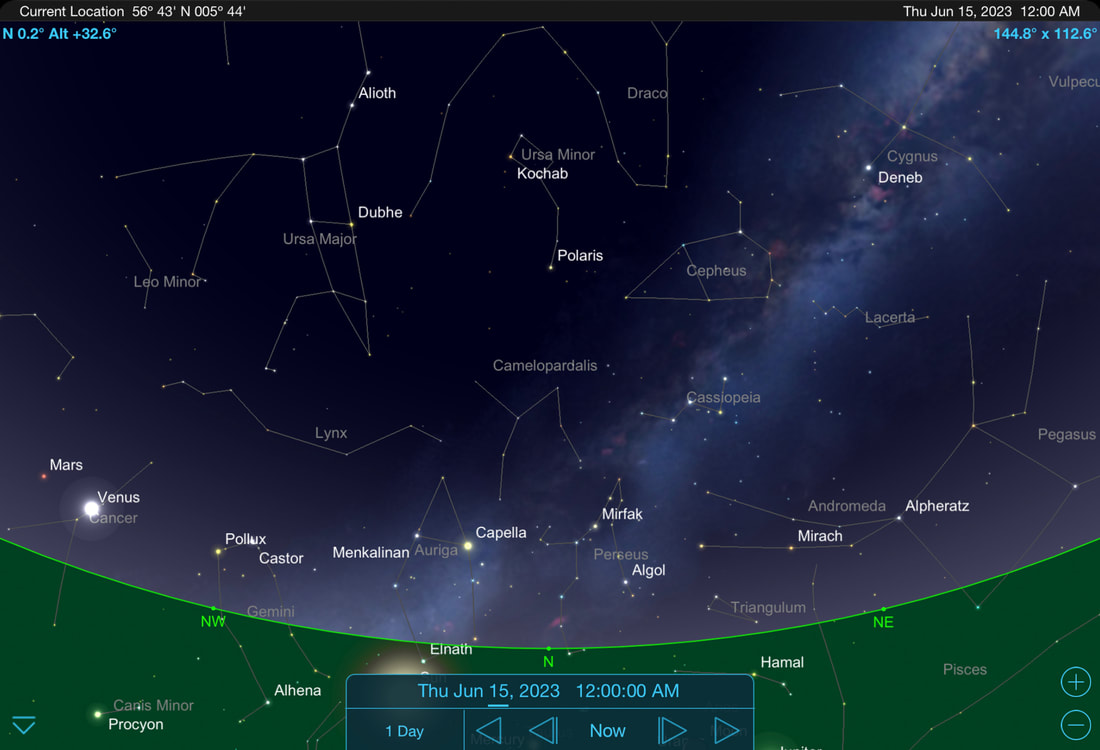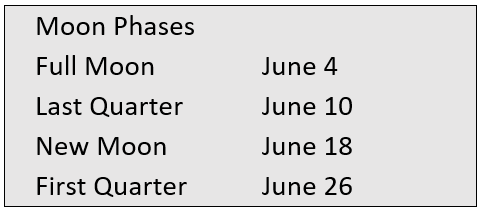|
June is the month of the Summer Solstice and the Longest Day, so night sky never quite gets dark and it’s not the greatest for spotting faint stars. However, there are 2-3 hours when you can spot the Summer Constellations that are up in the southern night sky just now and you can use the four bright stars, Arcturus, Antares, Vega and Spica to find your way around them. Also, Venus dominates the evening sky, playing its part as the Evening Star by shining brightly in the western sky until it sets at around midnight. The ConstellationsThis month, the sun sets around 10:00 pm, so the stars and the constellations start won’t become visible until about 11:30 pm and with sunrise at about 4:30 am, it means that you only have about 2-3 hours to spot them. In fact, it never really gets dark, but it is possible to spot the Summer Constellations that are up in our southern sky just now. Unlike the few big and bright Winter Constellations, these Summer Constellations are more numerous, smaller, and fainter, but you can use four bright stars that are easy to find to navigate your way around them. These stars are Arcturus, Antares, Vega and Spica.
Above Scorpius, you will find Ophiuchus (the Serpent-Bearer). It is a large constellation, which straddles the celestial equator, and it is commonly depicted as a man grasping a snake. This snake is represented by the constellation of Serpens (the Serpent), which is immediately to the west of Ophiuchus. Above Serpens, you’ll find the semi-circular constellation of Corona Borealis (the Northern Crown), which is made up of 4 bright stars that represent the crown of Ariadne, daughter of King Minos in Greek mythology, who helped the hero Theseus kill the Minotaur and find his way out of the labyrinth in which the creature lived. High up in the south-eastern sky, you will find Vega, the brightest star in the constellation of Lyra (the Lyre) and the fifth brightest star in our night sky. Vega acts as the guide star to the Keystone, a rectangle of four stars in the constellation Hercules, the fifth largest constellations in our night sky. To find the Keystone, trace a straight line from Vega and towards Arcturus. You will find it about one third of the way along this line. The Keystone represents the body of Hercules and is home to M13, the Great Global Cluster, a bee-like swarm of a third of a million red giant stars. It is one of the brightest globular clusters and although it is visible to the naked eye, it will be easier to see when using binoculars or a small telescope. The Moon
In Colonial America, this full Moon was referred to as the Strawberry Moon because this was when the red strawberries ripened there. Europeans have dubbed it the rose moon, while other cultures named it the hot moon because it occurred at the beginning of the summer heat. The last quarter Moon (a half-moon) is on 10 June, and on the morning of 14 June, you will find it close to Jupiter. The new Moon (no moon) is on 18 June. This means that a few of days before, on 15 and 16 June, you should see the thinnest of crescent Moons sitting low in the east before sunrise, which will be about 4:30 am. Alternatively, a few days later, on 19 and 20 June, you should be able to pick out the thinnest of crescent Moons sitting low in the western sky as the Sun sets. Then, on the evening of 21 June, a slightly thicker crescent Moon will be higher up in the western sky, sitting above to the right of Venus. The Moon will be higher still on 22 June, having moved above and to the left of Venus and a feint Mars will be in between the two of them. We have a first quarter Moon (a half-moon) on 26 June, and you will find it in the southern western sky, sitting beneath the constellation of Virgo. The following night, on 27 June it will have moved a little to the left to sit very close to Spica. The PlanetsVenus once again dominates the evening sky, and you will see it shining brightly in the western sky as darkness falls. Playing its part as the Evening Star, it sets at around midnight and will be shining far brighter than anything else in the night sky, except for the Moon. It reaches its greatest separation from the Sun on 4 June and on 13 June, it passes very close to the star cluster Praesepe and will be a sight well worth observing through binoculars or a telescope. A considerably fainter Mars will also be seen in the western sky as darkness falls. You will find it slightly to the left of Venus as it follows the Evening Star to drop below the horizon a little after midnight. On 2 June it will appear to lie in the middle of the swarming stars that make up Praesepe, the Beehive Star Cluster. Mars crosses from Cancer into Leo around 21 June, the day of the Summer Solstice when it will also be near to Venus and a crescent Moon. The next planet in the night sky will be Saturn, which rises at around 1:00 am and you will find it very close to the Quarter Moon on 10 June. Neptune will rise in the east at about 1:30 am, while Jupiter will be clearing the horizon at about 3:30 am. This giant planet will be in Aries. The crescent Moon right next to it on the morning of 14 June. Uranus reappears in the morning sky at the end of the month, rising at around 2:30 am but it will be very dim and difficult to see. Mercury is lost in the Sun’s glare this month. Meteor ShowersJune is a not a good month meteor showers because most of them occur when it is daylight just now. We need to wait until the Perseid Meteor Shower in August for our next good show. Radiating from the constellation of Perseus, it will be active between 17 July and 24 August and will peak on the night of 12-13 August. With the new Moon falling on 16 August, it should be a good year for seeing them because the Moon will only be a thin crescent and not too bright, so it won’t affect the show too much. If you do want to look for the Perseids, then they will be at their best on the few hours before dawn on 14 August when the radiant point is at its highest in the sky. Summer SolsticeThis year, the summer solstice occurs on 21 June at 14:58 GMT (15:58 BST) and is the exact moment when the North Pole is at its maximum tilt towards the Sun. However, many people refer to it as the “Longest Day” because it is the day when the number of hours of daylight are at their maximum and the number of hours of night are at their minimum. This is because it is the day when the Sun rises at its closest to north-east, reaches its highest position in the sky at noon and then sets at its closest to north-west. For instance, on 21 June this year, our sunrise here on the Peninsula will be at 4:27:33 am and our sunset will be at 10:22:20 pm, giving us 18 hours, 5 minutes and 13 seconds of daylight. On June 20, our hours of daylight will be 5 seconds less and on June 22 they will be 3 seconds less.
0 Comments
|
Steven Marshall Photography, Rockpool House, Resipole, Strontian, Acharacle, PH36 4HX
Telephone: 01967 431 335 | Mobile: 07585 910 058 | Email: [email protected]
Telephone: 01967 431 335 | Mobile: 07585 910 058 | Email: [email protected]
All Images & Text Copyright © 2024 - Steven Marshall - All Rights Reserved

